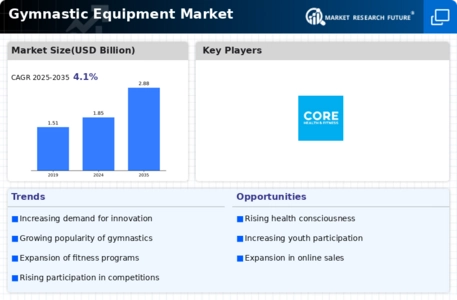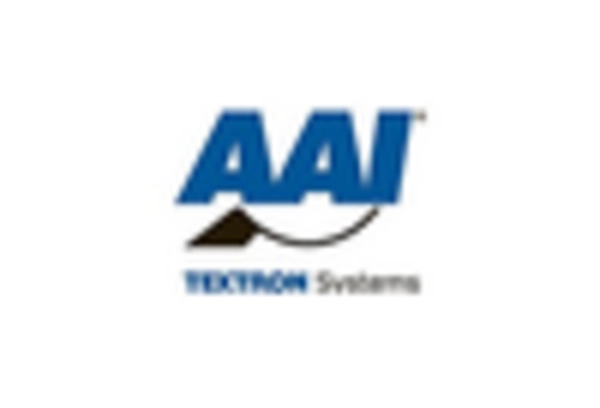Technological Innovations
Technological advancements are playing a crucial role in shaping the Gymnastic Equipment Market. Innovations in materials and design have led to the development of safer and more efficient equipment, enhancing the overall training experience for athletes. For instance, the introduction of smart gymnastic equipment equipped with sensors and performance tracking capabilities is gaining traction. This technology not only aids in training but also provides valuable data for coaches and athletes to improve performance. The market for smart fitness equipment is expected to grow significantly, with projections indicating a potential increase of over 20% in the next five years. Such innovations are likely to attract a broader audience to gymnastics, thereby expanding the market.
Youth Engagement in Sports
The Gymnastic Equipment Market is experiencing a notable boost due to increased engagement of youth in sports. Schools and community programs are increasingly incorporating gymnastics into their physical education curricula, fostering early interest in the sport. This trend is supported by various initiatives aimed at promoting physical activity among children, which has led to a rise in youth gymnastics programs. Data suggests that participation rates in youth sports have risen by approximately 10% over the past few years, indicating a growing market for gymnastic equipment tailored for younger athletes. As more children take up gymnastics, the demand for specialized equipment such as balance beams and mats is likely to increase, further driving market growth.
Rising Health Consciousness
The increasing awareness of health and fitness among individuals appears to be a primary driver for the Gymnastic Equipment Market. As more people recognize the importance of physical activity, there is a notable surge in participation in gymnastics and related activities. This trend is reflected in the growing number of gymnastics clubs and training facilities, which have expanded their offerings to include a variety of equipment. According to recent data, the fitness equipment market is projected to grow at a compound annual growth rate of approximately 4.5%, indicating a robust demand for gymnastic equipment. The emphasis on holistic health and wellness is likely to further propel the market, as consumers seek effective ways to enhance their physical capabilities through gymnastics.
Growing Popularity of Competitive Gymnastics
The rising popularity of competitive gymnastics is significantly influencing the Gymnastic Equipment Market. As more athletes aspire to compete at various levels, from local competitions to international events, the demand for high-quality gymnastic equipment is on the rise. This trend is evident in the increasing number of gymnastics competitions and events being organized worldwide, which has led to a heightened interest in the sport. Market analysis indicates that the competitive gymnastics segment is expected to grow at a rate of approximately 5% annually, driven by the need for specialized equipment such as vaults, uneven bars, and floor mats. This growing competitive landscape is likely to further enhance the market for gymnastic equipment.
Increased Investment in Sports Infrastructure
Investment in sports infrastructure is another significant driver for the Gymnastic Equipment Market. Governments and private entities are increasingly recognizing the value of sports in promoting health and community engagement. This has led to the construction of new gymnastics facilities and the renovation of existing ones, which often include state-of-the-art gymnastic equipment. Recent reports indicate that public and private investment in sports infrastructure has risen by approximately 15%, creating a favorable environment for the growth of the gymnastic equipment market. Enhanced facilities not only attract more participants but also encourage higher levels of competition, further stimulating demand for quality equipment.


















Leave a Comment